Using medium shots is like finding the sweet spot in your favorite candy mix. They help you show character emotions while keeping the surrounding context visible, which is super essential. Aim for eye-level angles to invite your audience into your character’s world. Lighting also plays a vital role—use softer lighting for warm moments and harsher light for tense scenes. Don’t forget about the background; it can say a lot about your characters without a word. And hey, try adjusting angles and composition to keep things visually interesting. Trust me, there’s way more to discover about making your characters shine!
Key Highlights
- Use medium shots to balance character expressions and surroundings, enhancing viewer connection while providing essential context.
- Experiment with lighting and angles to evoke specific emotions, shaping audience perceptions of character vulnerability or power.
- Incorporate background elements thoughtfully to deepen storytelling, using colors and objects to reflect character emotions and relationships.
- Apply the rule of thirds in shot composition to create visual interest and direct viewer focus on key elements of the scene.
- Utilize editing techniques like cut on action and J-Cuts to maintain energy and enhance emotional impact throughout the narrative.
Understanding Medium Shots
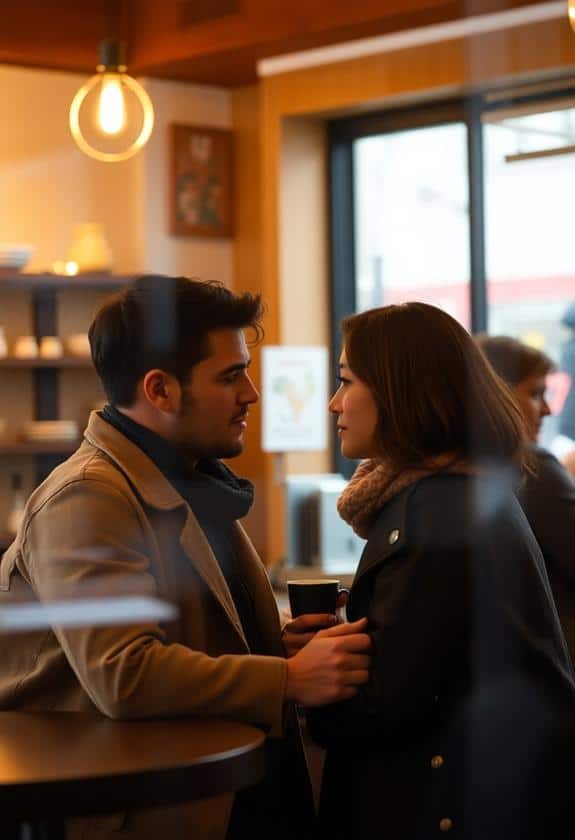
Medium shots are a staple in filmmaking and photography, striking a balance between the subject and their surroundings. When you use a medium shot, you’re framing your subject from the waist up, allowing viewers to see both their expressions and a hint of their environment. It’s like inviting your audience into a conversation, where they feel connected yet safe. Incorporating elements like an acrylic clapboard can enhance your organization during shoots, making it easier to focus on the storytelling aspect.
I remember my first attempt at using medium shots during a school project. I was nervous, unsure if I’d capture the right emotions. But once I got the hang of it, everything clicked! I found that medium shots emphasize feelings while keeping the background relevant. For instance, if your character’s standing near a park bench, it tells a story just by being there.
When you’re filming, think about the subject’s posture and expression. Are they relaxed or tense? That subtlety can add depth to your shot. And don’t forget about lighting! It can change the mood in an instant. So, grab your camera, experiment with medium shots, and discover how they can enhance your storytelling. You might just find a new favorite technique that makes your stories shine!
Importance of Character Framing
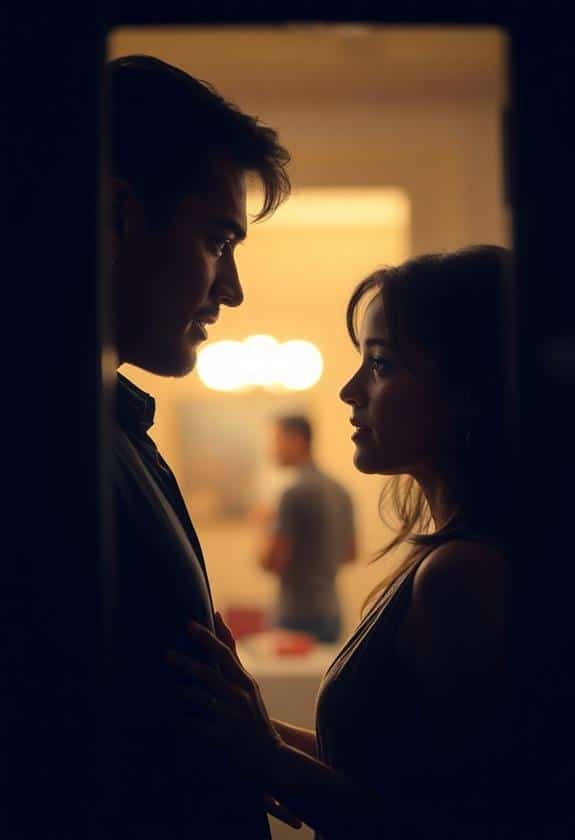
Character framing plays an essential role in storytelling, as it influences how viewers connect with your subject. When you frame a character thoughtfully, you help your audience see them not just as a figure on a screen, but as a person with emotions and experiences. Think about it: when you shoot a medium shot, you can capture facial expressions and body language—this adds layers to your character. Proper lighting can enhance this effect, making your characters more vibrant and engaging, so consider investing in top lighting gear choices to improve your shots.
I remember making my first short film. I was so focused on the action that I neglected the framing. The result? My characters felt distant, and the audience didn’t connect. But once I paid attention to how I framed each shot, everything changed. A simple shift in angle made my character feel more relatable and engaging.
When framing, consider the environment, too. A cozy setting can make a character feel safe, while a chaotic backdrop might create tension. You want viewers to feel like they’re part of the story, not just spectators. So, experiment with your shots, play with angles, and don’t be afraid to get creative! You’ll find that good character framing can really elevate your storytelling.
Balancing Intimacy and Context
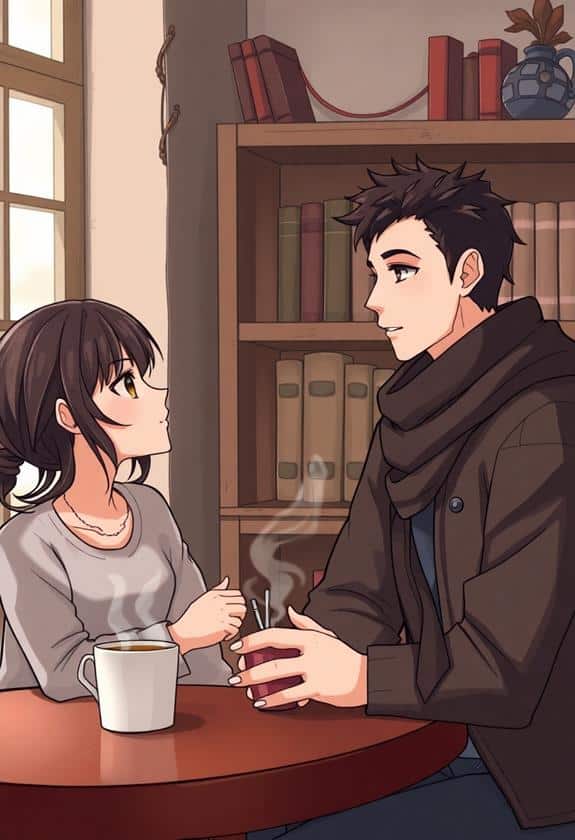
Striking the right balance between intimacy and context in your shots can considerably enhance the emotional impact of your story. When you’re filming, think about how you want your audience to feel. Medium shots allow viewers to connect with characters while also showing their surroundings. It’s like inviting someone into a cozy room while still letting them peek out the window.
Here’s a quick table to help you visualize how to balance these elements:
| Element | Intimacy | Context |
|---|---|---|
| Facial Expression | Close-ups highlight emotions | Medium shots reveal the environment |
| Body Language | Shows vulnerability | Indicates character’s position |
| Surroundings | Creates a personal atmosphere | Establishes story setting |
| Distance | Closer shots deepen connections | Indicates the character’s position |
| Lighting | Soft lighting feels intimate | Bright lighting sets the scene |
Using Eye Level for Connection
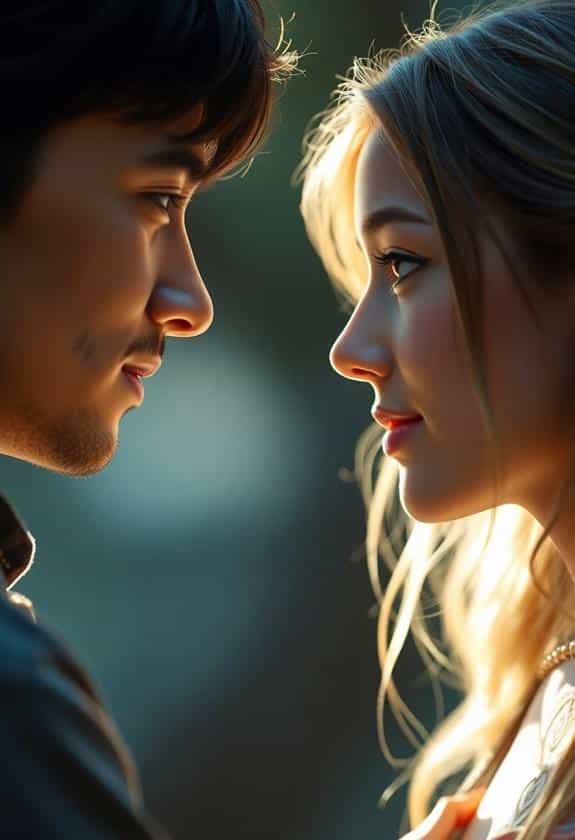
When you shoot at eye level, you create an immediate connection between the audience and the characters. This angle invites viewers into the character’s world, making them feel like they’re part of the story. Imagine watching a scene where a character is sharing a heartfelt moment. If the camera is at eye level, you’re right there with them, feeling their emotions. It’s like sitting across from a friend who’s sharing their deepest secrets—you just can’t help but connect. Choosing the right camera can enhance this emotional impact even further, especially when considering essential cameras for aspiring filmmakers.
I remember shooting a scene where my character faced a tough choice. At eye level, I noticed how much more my friends reacted to the raw emotion. They laughed, cried, and even gasped at all the right moments! It’s amazing how this simple adjustment can make such a difference.
Incorporating Background Elements
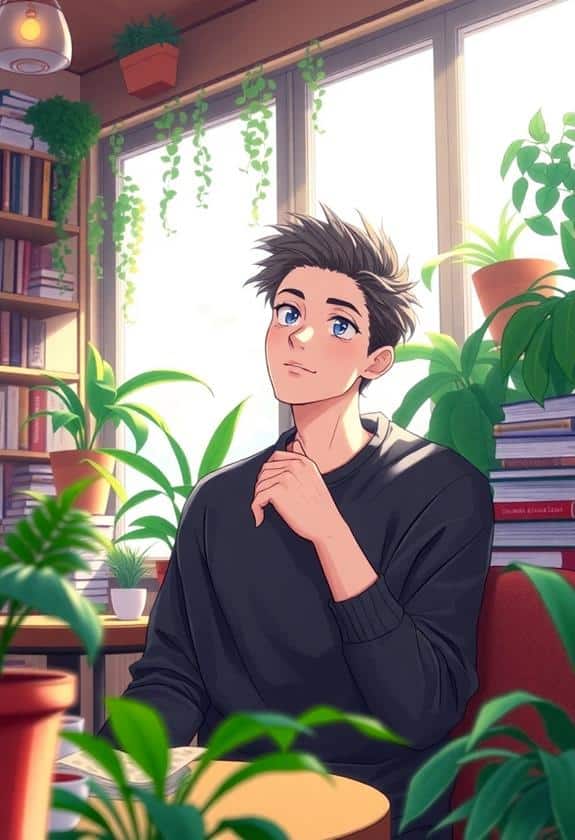
Many filmmakers overlook the importance of background elements, but incorporating them can greatly enhance your medium shots. Think of the background as your story’s silent partner, helping to tell the tale without saying a word. When you focus on a character in a medium shot, what’s behind them can add layers of meaning. For instance, utilizing effective lighting gear like the Glide Gear BFS 100 Butterfly Scrim Diffuser can soften harsh lights and elevate the visual quality of your background. Here are four ways to spice up your backgrounds:
- Set the Mood: Use warm colors in a cozy café to evoke comfort or cooler tones in a dark alley to create tension.
- Show Relationships: Place other characters in the background to highlight connections or conflicts without needing dialogue.
- Add Depth: Use natural elements like trees or buildings to create a sense of space, making your scene feel more three-dimensional.
- Symbolism: Incorporate objects like a wilting plant to symbolize a character’s emotional state or a bustling street to show their busy life.
Adjusting Shot Composition
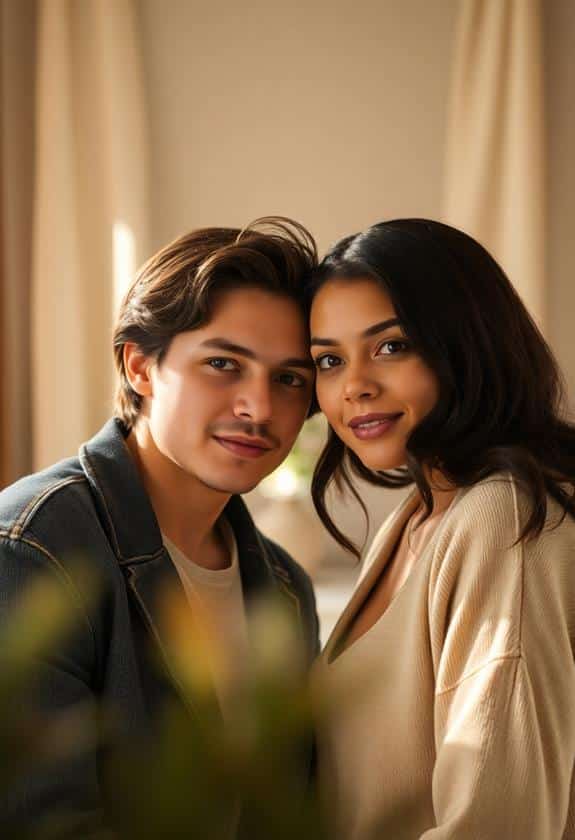
Incorporating background elements enhances your medium shots, but the way you compose the shot itself can take your visuals to the next level. Consider your subject’s placement within the frame. You might want to try the rule of thirds, where you position your character off-center. This creates visual interest and adds depth, much like how soft diffusion from softbox lights can enhance image quality. Trust me, it makes a world of difference!
Also, think about the angle from which you’re shooting. A slightly lower angle can make your character appear more powerful, while a higher angle can suggest vulnerability. It’s like magic! You’re not just capturing a moment; you’re telling a story.
Don’t forget about the space around your character. Too much empty space can feel lonely, while a cluttered frame can distract your audience. Balance is key. I once filmed a scene with an overstuffed background, and let me tell you, it ended up being a chaotic mess!
Utilizing Lighting for Emotion
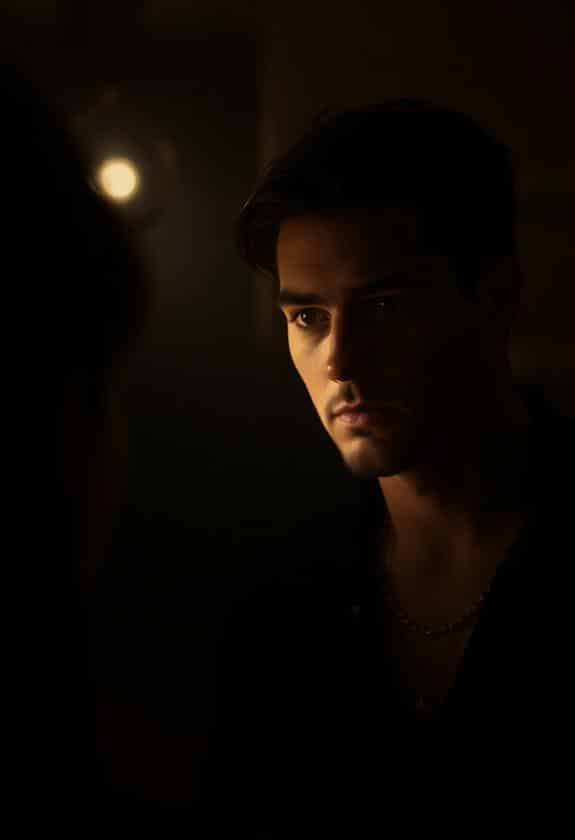
Lighting plays an essential role in conveying emotion in your medium shots. Think about how light can change the mood of a scene. When I first started filming, I realized that lighting could turn a simple moment into something powerful. You can use these tips to create feelings that resonate with your audience:
- Soft Lighting: This creates a warm, inviting atmosphere, perfect for happy, tender moments. It’s like a gentle hug from a friend.
- Harsh Lighting: Use this for intense scenes. It can cast deep shadows that make your character feel isolated—just like when you’re stuck in a tough situation.
- Backlighting: This technique can create a halo effect, making a character look heroic or mysterious. It’s like when you see someone standing in the sunset, looking epic!
- Colored Gels: Experimenting with color can evoke specific emotions. For instance, blue light can create a feeling of sadness, while yellow might bring a sense of joy.
Creating Tension Through Angles
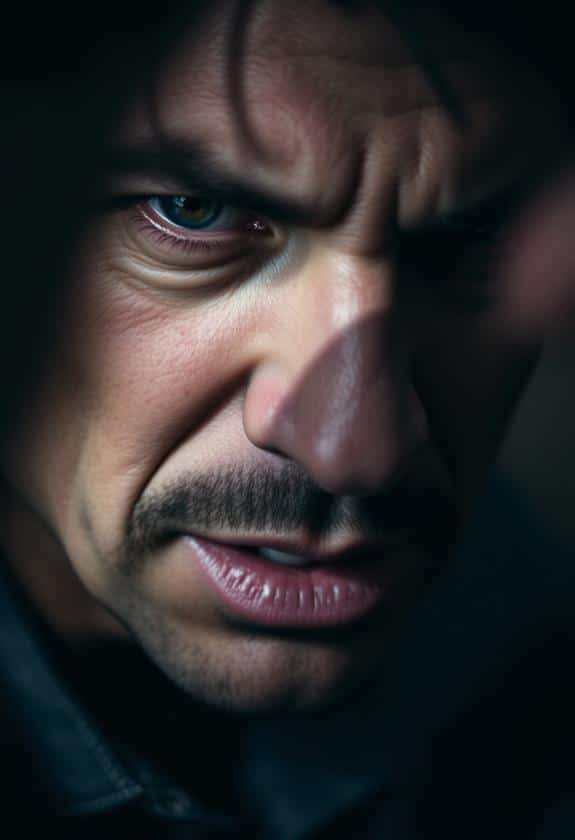
Angles can dramatically affect the tension in your medium shots. When you’re filming, think about how different angles can create feelings of unease or excitement. For example, a low-angle shot can make your character seem powerful, while a high angle can portray vulnerability. I remember a project where I shot a scene from above, and it instantly made my character seem small and overwhelmed. That tiny change added so much drama!
You can also experiment with close-ups at odd angles. Tilting the camera slightly can give your audience a sense that something isn’t quite right. It’s like a visual nudge, encouraging them to pay closer attention. Plus, don’t forget about the characters’ gazes. If one character looks off to the side while the other stares directly into the camera, it creates an unspoken tension that can keep viewers on their toes.
Editing Techniques for Impact
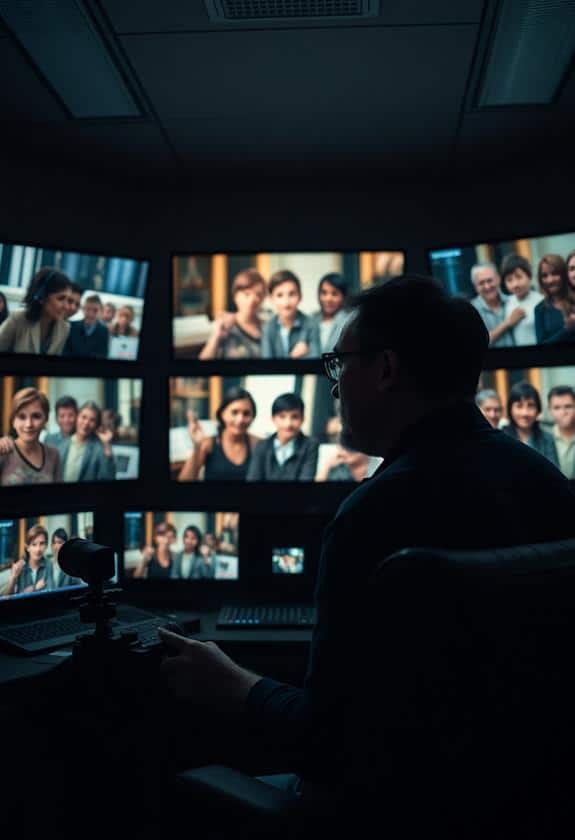
Editing can be the secret sauce that transforms your medium shots into powerful storytelling moments. When you’re piecing together your film, think about how you can enhance the emotions your characters feel through editing techniques. Here are four impactful methods to contemplate:
- Cut on Action: When a character moves, cut to the next shot just as they make that motion. It keeps the energy flowing and draws viewers into the scene.
- Match Cuts: Use similar shapes, colors, or actions between cuts. This technique can create a visual connection that emphasizes a character’s emotions or experiences.
- J-Cuts and L-Cuts: Let the audio of the next scene spill over into the current one (J-Cut) or let the sound from the previous scene linger into the next (L-Cut). This technique can build anticipation and keep the audience engaged.
- Pacing: Adjust the timing of your cuts to reflect the mood. Quick cuts can create excitement, while slower cuts can build tension.
Frequently Asked Questions
What Are the Common Mistakes to Avoid With Medium Shots?
When using medium shots, you’ve gotta avoid a few common pitfalls. First, don’t forget to frame your subject properly; cutting off heads or limbs can confuse viewers. Also, steer clear of static backgrounds that distract from your character. Remember, lighting matters! Poor lighting can make even the best performance look flat. Finally, don’t overuse the same angle; variety keeps your audience engaged. So, mix it up and have fun experimenting!
How Do Medium Shots Differ From Close-Ups and Wide Shots?
Medium shots sit between close-ups and wide shots, giving you a balanced view of the characters and their surroundings. While close-ups capture emotions and details, medium shots show body language and interactions, making scenes feel more relatable. Wide shots, on the other hand, often give context to the environment. Think of it like a hug: close-ups are tight and personal; wide shots are broad and distant, while medium shots are warm and inviting, wrapping you in the story.
Can Medium Shots Be Effective in Animation as Well?
Absolutely, medium shots can work wonders in animation! They give viewers a clear view of the characters while showing their surroundings. Think about how you can use them to express emotions—like a character’s shy smile or determination. I remember animating a scene where a character faced a challenge; the medium shot captured their struggle perfectly. Plus, it keeps things balanced, so the audience feels connected without losing the bigger picture. Isn’t that cool?
What Genres Benefit Most From Using Medium Shots?
You’ll find that genres like drama and romance really shine with medium shots. They capture characters’ emotions and relationships without losing the setting’s context. Imagine a heartfelt conversation where you can feel the tension or love in the air! Even comedy benefits, as medium shots can highlight facial expressions for punchlines. So, next time you’re filming, think about how these shots can deepen your storytelling and connect with your audience. It’s all about those moments!
How Can Medium Shots Influence Audience Perception of Characters?
Medium shots can really shape how you see a character, almost like looking through a window into their world. They let you catch emotions and body language, making characters feel relatable. For example, when a character stands confidently in a medium shot, you feel their strength. On the flip side, if they’re slouched, it shows vulnerability. So, next time you’re filming, think about how those shots can tell your story and connect with your audience!
Conclusion
So, when you’re using medium shots, think of them as a warm hug for your characters. Just like that time I tried to make my puppy feel at home with a cozy blanket, those shots create a space where viewers can connect and understand. Balancing your character’s emotions with their surroundings helps tell a deeper story. Remember, every shot is a chance to invite your audience into your world—so make it count, and let your characters shine!




